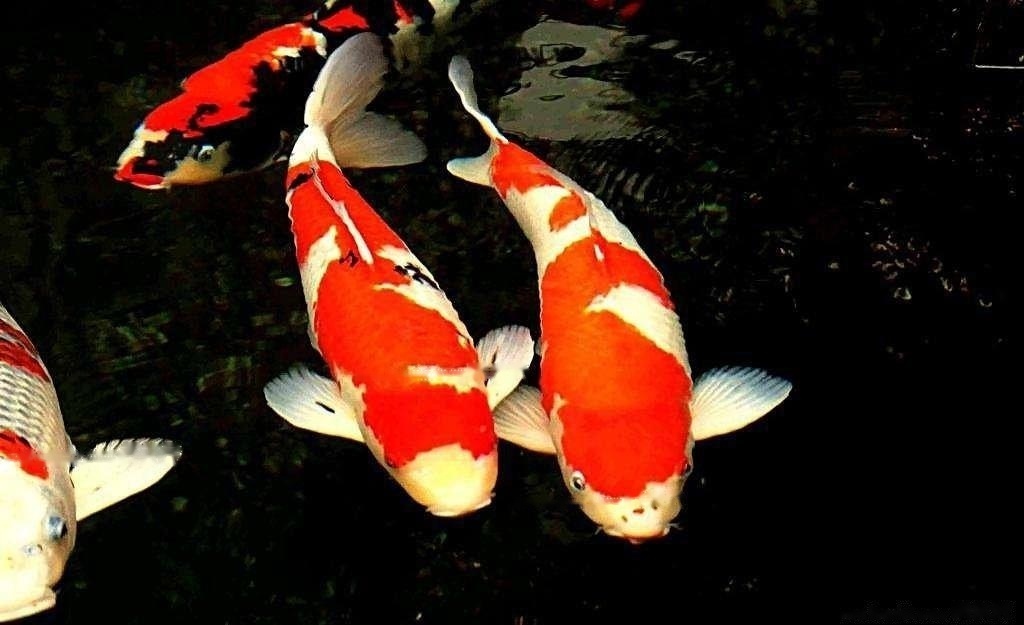
Koi is an ornamental fish evolved from wild edible carp fish. It is named after the markings of the subtropical and temperate regions. It belongs to freshwater fish. There is a pet editor to introduce to you how to raise koi!
1. Koi color variety collocation
1. Color collocation
When raising koi outdoors, it is generally matched with red and white, Taisho three-color, Showa three-color, gold or platinum, autumn water, light yellow and other koi.
2. Variety matching
In the aquarium, people can only watch the side of the koi, and the koi can choose the varieties that reflect the light, such as gold, platinum gold, pine leaves Gold, Yamabuki Gold and other koi, together with German carp. But whether kept outdoors or in aquariums, most of them are koi with bright colors, supplemented by darker, shiny and elegant ones.
2. Koi stocking density
1. Container size
Before raising koi, the primary consideration for the owner is the size and capacity of the raising container Number of koi. The viewing of koi mainly depends on the gorgeous color of the koi, the sturdy shape of the koi, the elegant movements of the koi and the posture of the koi swimming in groups, and the koi must be viewed from the back, that is, the best viewing is from diagonally above, if the koi is viewed from the side. Carp is much inferior. To be able to fully meet these conditions, only outdoor breeding.
2. Density control
However, as urban residents, not everyone can achieve it, and can only be replaced by aquariums. Regarding the stocking density of koi, it should be adjusted according to the size of the aquarium, the amount of water, the water temperature, the oxygenation state, the size of the koi fish and the growth of the koi.
3. Koi feeding and feeding methods
1. Adult fish feeding
Koi are omnivorous fish, and animal or plant bait can be used Feeding koi such as water fleas, water worms, biscuits, vegetables, and even rice balls can feed koi. If you want the koi to have a fresh color, in addition to matching the lighting, background and water quality, it is more important to feed the high-nutrition special koi color-enhancing artificial feed, in flake or granular form. Koi bait can be put on a single bull or alternately. Koi are gluttonous. If they eat too much, they will suffer from food accumulation or constipation.
2. Feeding of juveniles
For juvenile koi after hatching, rotifers, water fleas or egg yolks can be fed at the beginning. Small koi fish about 2cm should be fed with bait such as red worms. Koi that are more than 5cm long can eat animal or plant bait casually.
3. Number of bait feeding
Koi are cold-blooded animals, and the body temperature of koi varies with the water temperature. Feed the koi with different feeds. When the water temperature is low, the oxygen-consuming bacteria in the water will decrease, the digestive enzymes in the intestines of the koi will decrease, and if you feed too much, the koi will not be indigestion and will not die, but when the next spring comes, the koi will only grow horizontally. Getting fat doesn't grow up. Therefore, the number of times you give koi bait is closely related to temperature.
Four. Koi fish rearing skills
1. Water temperature adaptation
Koi are huge in size, up to 1 meter in length and up to 10 kilograms in weight. Can adapt to the water temperature of 2-30 ℃. Can be kept in outdoor pools. Koi are gentle by nature, like to swim in groups, and are easy to domesticate.
2. Bottle feeding
Some domesticated koi can not only take food from the owner's hands, but also can be supported by people's hands and accompany people for walks around the pond. A method worth advocating is to feed with a bottle, which does not pollute the water quality and increases the fun of feeding.
3. Water quality control
The water capacity of the aquarium should not be less than 200 liters. Koi is an omnivorous fish, eating dried and fresh fish and insects, synthetic feed and even rice and food. However, it should be noted that koi eat a lot, excrement a lot, and the water quality is easily spoiled.
4. Feeding amount
Note that the feeding amount should not be too large, and it is enough to be full. Due to the large activity of koi and strong oxygen consumption, the aquarium should be equipped with oxygen-enhancing facilities, and attention should be paid to the breeding density to ensure that there is sufficient oxygen in the aquarium water.
![[Dog Training 5] The training method of pet dog dining etiquette](/static/img/12192/12192_1.jpg)




